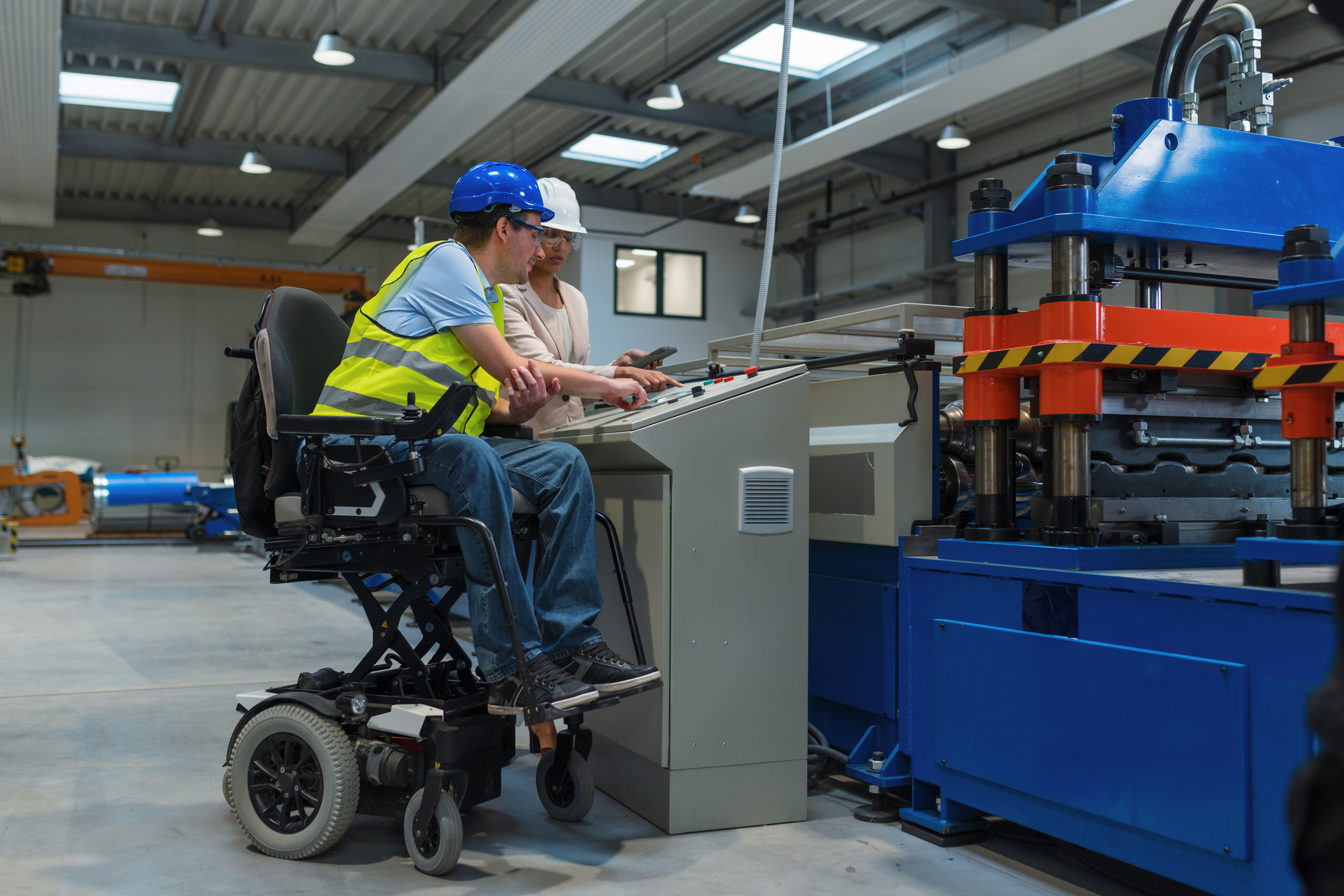Steps To Becoming A Full-Time Employee With A Disability

For individuals receiving Social Security Disability Insurance (SSDI), the idea of returning to full-time work often involves a mix of optimism and uncertainty. Health considerations, financial stability and fear of losing benefits are all significant factors in deciding whether, when and how to return to work. In many cases, a gradual transition is not only common—it’s crucial.
Rejoining the workforce full time involves understanding how your health interacts with work demands, testing how much you can work and using programs that protect your benefits.
Programs administered by the Social Security Administration (SSA), such as Ticket To Work (TTW) with its variety of work incentives, allow individuals to explore employment without the immediate risk of losing vital benefits.
This article will guide you through the steps to becoming a full-time employee with a disability, addressing key questions such as:
- How do you transition from part-time to full-time employment?
- What is Ticket To Work and how can it help you on your full-time work journey?
- How does full-time employment affect your SSDI benefits?
- What are the legal protections and accommodations you’re entitled to in the workplace?
Assessing Readiness For Increased Work Responsibilities
Your ability to work is shaped by things like health, energy levels and your environment. Self-assessment is an early and ongoing part of evaluating whether becoming a full-time employee with a disability is doable.
Many individuals begin by tracking how they feel after engaging in routine activities or part-time work. Observing things like tiredness, ability to concentrate and any pain offer insight into how much work you might be able to handle. Paying attention to these details helps you understand the types of job responsibilities that will work for you.
Healthcare providers can give helpful guidance during this time. Doctors and specialists can point out limits, suggest realistic workloads and warn about health risks linked to certain job tasks. Their input can also support the need for work accommodations or a flexible schedule.
Understanding your rights in the workplace is another part of assessing readiness. The Americans with Disabilities Act (ADA) requires employers to provide reasonable accommodations to qualified employees with disabilities. These accommodations might include flexible work hours, modified tasks or remote work options—all of which can support you taking on more responsibility over time.
Gradually Increasing Work Hours And Responsibilities
In many cases, individuals test their work ability by first trying part-time or flexible work. Opportunities with adaptable hours or reduced workloads provide a chance to see how your body and mind respond to job demands without the pressure of a full-time schedule.
This gradual return to work is like physical therapy, where slowly increasing activity helps your body heal and adjust. In the same way, slowly adding more work hours over time lets you keep track of your health and make changes as needed.
Moving forward might include increasing from 10 to 20 hours per week over several months. These small steps allow individuals to notice how changes in workload affect their well-being. You may use journals or other tracking tools to monitor symptoms, energy levels and recovery time.
In addition to hours, responsibilities can also be increased steadily. For example, you may begin by handling familiar tasks and later take on new assignments that require different skills.
These approaches help build confidence and capability while avoiding burnout. Employers may be willing to adjust your role as you grow, especially when supported by open communication and planning.
Understanding The Impact Of Full-Time Work On Social Security
One of the most complex parts of increasing work hours is understanding how earnings will affect disability-related benefits. SSDI is tied to the concept of substantial gainful activity (SGA), which is the income level SSA uses to determine whether someone remains eligible for benefits.
The SSA has created several work incentives to support the transition to employment without sudden loss of benefits:
- Trial Work Period (TWP): Allows individuals to test being a full-time employee for nine non-consecutive months while still receiving full SSDI benefits, regardless of earnings.
- Extended Period of Eligibility (EPE): After TWP, a 36-month window follows where benefits may continue when you earn below the SGA level.
- Impairment-Related Work Expenses (IRWEs): Certain costs related to your disability that are necessary for work may be deducted from earnings when determining eligibility.
These incentives serve as safety nets during periods of increasing income. For example, if you exceed the SGA threshold for a month, you may still retain benefits if IRWEs reduce countable earnings. Or you might temporarily reduce hours and requalify for benefits under EPE rules.
Planning For A Return To Full-Time Employment
Some individuals create a personalized return-to-work plan to manage the transition thoughtfully. These plans often start with realistic and flexible goals, accounting for individual health, financial needs and career interests.
Finding the right balance between your goals and your health takes careful planning. Short-term goals might include increasing hours to a certain level, while long-term goals could involve working full time in a new industry or advancing within a current role. Since health can change, it’s important to have backup plans that let you adjust without losing the progress you’ve made.
Keeping track of progress helps you see if your plan is working. Some people use logs to note things like fatigue, pain, productivity and finances. Others may talk with doctors or supervisors to see how the transition is affecting their performance. Regular check-ins can help you make needed changes or show that increased work is sustainable.
Getting feedback from people you trust can make these evaluations more helpful. Whether it’s from a doctor, job coach or vocational specialist, their input can show what’s going well and point out areas where more support is needed.
Gaining Extra Support With Allsup Employment Services
Allsup Employment Services (AES) is an SSA-authorized EN for the Ticket To Work Program. We have over 10 years of experience helping thousands return to work successfully. We can help guide you through the SSDI work incentives on your journey to becoming a full-time employee.
The Ticket To Work Program helps you protect your SSA disability benefits, and working with AES you can:
- Earn More. Make as much income as you choose during the Trial Work Period and protect your full SSDI benefits.
- Stress Less. Avoid medical disability reviews and the worry that comes with them.
- Keep Medicare. While working, you can keep Medicare for over seven years.
- Avoid Risk. If you stop working anytime within five years, your SSDI benefits can resume through a reinstatement process.
- Pay Nothing. As a Social Security-authorized Employment Network, our services are provided at no cost.
Choosing AES means working with an EN who’s focused on your goals and will work with you every step of the way.
Get started with no cost and no obligation.
You can reach Allsup Employment Services today by calling (866)-540-5105 or requesting a call.
Related Articles

Return to Work
6 Steps To Assessing Your Readiness To Return To Work

Return to Work
How To Avoid High Turnover Costs By Bringing Former Employees Back To Work – As Featured By Forbes

Return to Work
How To Safely Bring Individuals With Disabilities Back To Work During The Pandemic – As Featured By Forbes

Return to Work
Managing Personal Expectations When Returning To Work – As Featured By Forbes
Subscribe To Be Notified When A New SSDI + Work Blog Is Posted
Provide your email address here
